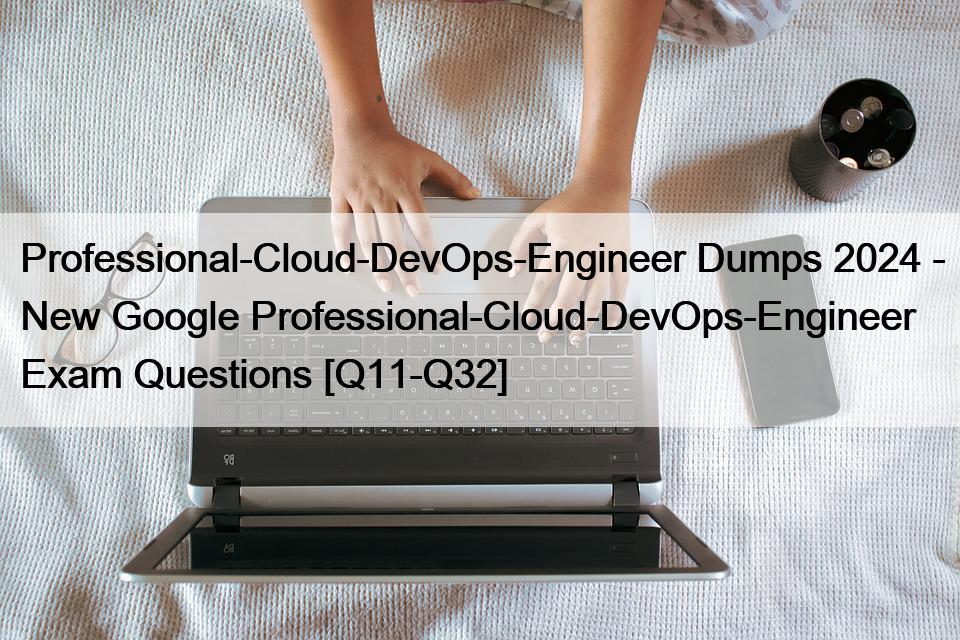Professional-Cloud-DevOps-Engineer Dumps 2024 – New Google Professional-Cloud-DevOps-Engineer Exam Questions [Q11-Q32]

Professional-Cloud-DevOps-Engineer Dumps 2024 – New Google Professional-Cloud-DevOps-Engineer Exam Questions
Free Professional-Cloud-DevOps-Engineer Braindumps Download Updated on Aug 05, 2024 with 166 Questions
Introduction to Google Professional Cloud DevOps Engineer Exam
Google Professional Cloud DevOps Engineer Exam is a certification exam that is conducted by Google to validates candidate knowledge and skills of working as a Professional Cloud DevOps engineer in the IT industry.
After passing this Professional Cloud DevOps Engineer Exam test, candidates get a certificate from Google that helps them to demonstrate their proficiency in Google Professional Cloud DevOps Engineer to their clients and employers.
To be eligible for the Professional-Cloud-DevOps-Engineer certification exam, candidates need to have at least three years of experience in cloud computing, software development, and DevOps practices. They also need to have a good understanding of GCP services and tools, including Compute Engine, Kubernetes Engine, Cloud Storage, Cloud SQL, Cloud Build, and Cloud Monitoring. Candidates are recommended to take the GCP Associate Cloud Engineer and GCP Professional Cloud Architect certification exams before attempting the Professional-Cloud-DevOps-Engineer certification exam.
Google Professional-Cloud-DevOps-Engineer exam is designed for individuals who have experience in DevOps and are looking to enhance their skills in cloud-based DevOps. Google Cloud Certified – Professional Cloud DevOps Engineer Exam certification is ideal for DevOps engineers, software developers, system administrators, and IT professionals who want to improve their knowledge of DevOps practices on the Google Cloud platform.
Google Professional-Cloud-DevOps-Engineer Exam Practice Test Questions: https://www.topexamcollection.com/Professional-Cloud-DevOps-Engineer-vce-collection.html





